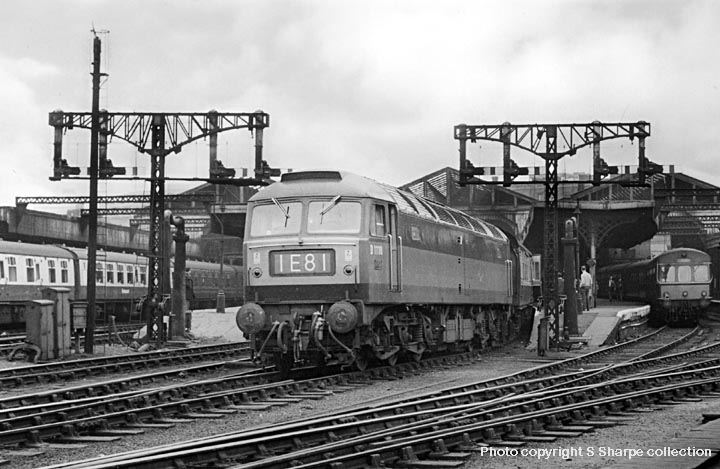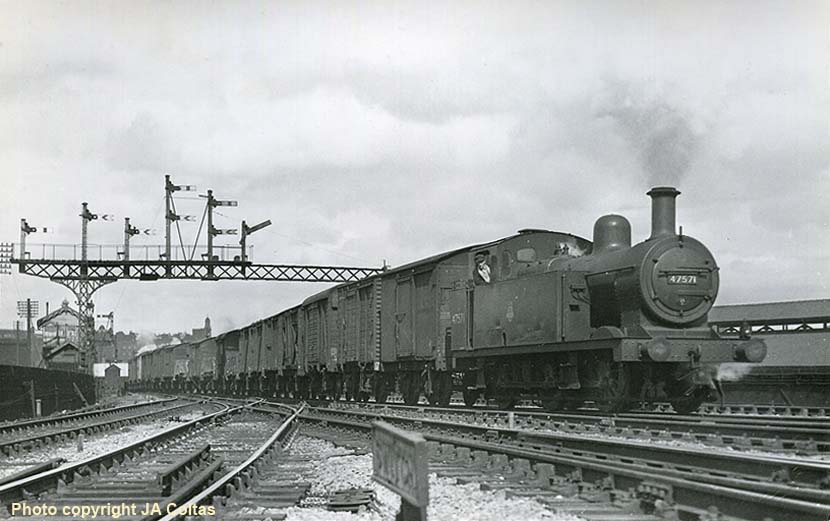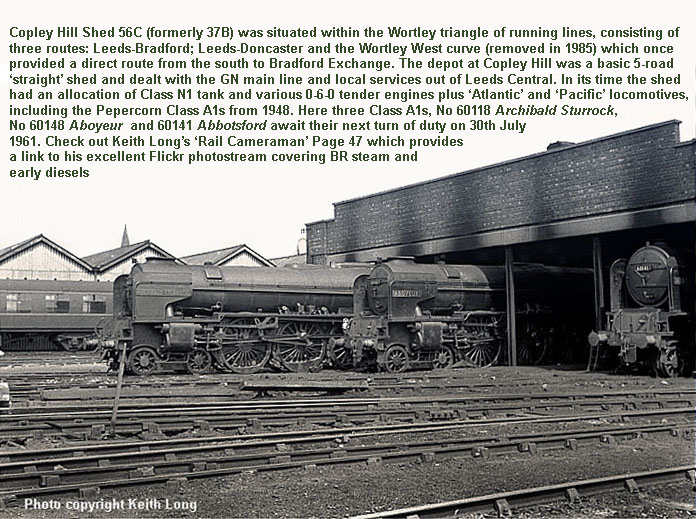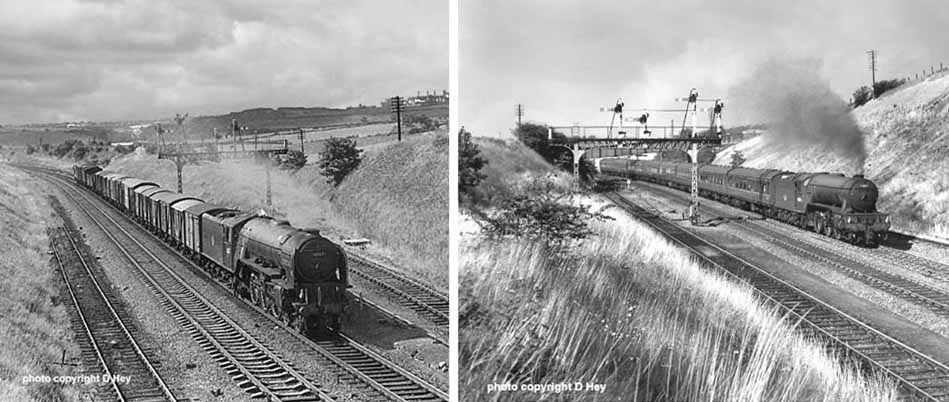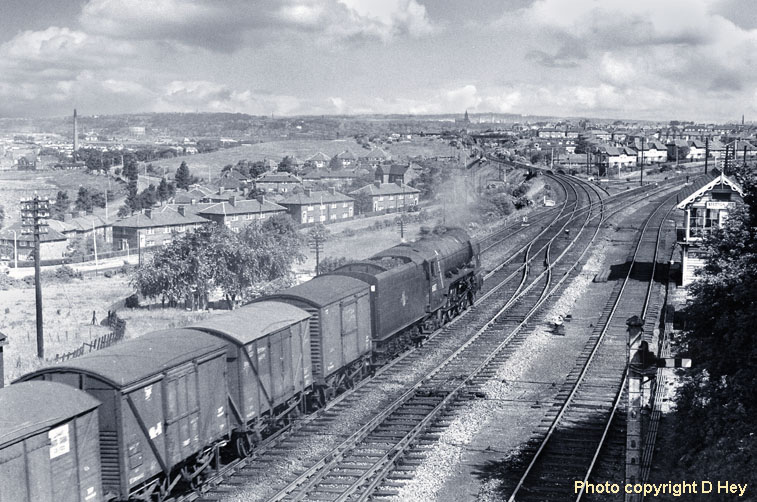Although local passenger services between Leeds-Bradford and Harrogate were handed over to the new diesel railcars in 1954, the change-over from steam didn't matter too much. Train spotters were only interested in prestigious express engines with namesplates, and as long as main line passenger services remained in the hands of steam, we could still enjoy the spectacle of a Gresley or Peppercorn Pacific pounding up the hill through Holbeck High Level station, or one of Holbeck's 'Royal Scots' or 'Jubilee' class 'namers' headed north through the low level platforms. I recall my first sighting of Holbeck's new 'Britannia' No 70054 Dornoch Firth on the northbound 'Waverley' in place of the usual 'Jubilee' class - sporting BR's passenger green livery and in gleaming condition at the time - and, I'm ashamed to say, that's all that mattered to me - big express engines with nameplates.
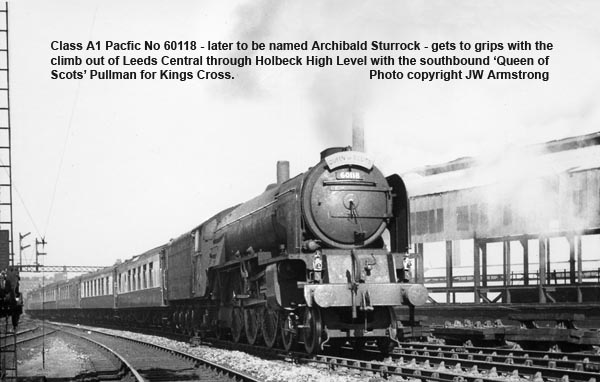
In many ways it was lucky that I took up train spotting when I did, because back in 1952 BR had a total of 18,864 steam locomotives on its books, and although the number was reduced by more than thirteen hundred to 17,527 in 1956 - then down to 16,108 in 1958 - there was a sense that it was a gradual process; the simple means of eliminating some elderly pre-grouping locomotives with the introduction of the new standard classes. Of course, 'new' for 'old' was quite acceptable, but no one could have foreseen the astonishingly swift decline that was about to take place over the next ten years. The frenetic goings-on that led to the subsequent free-fall of steam in the Sixties was a deplorable state of affairs.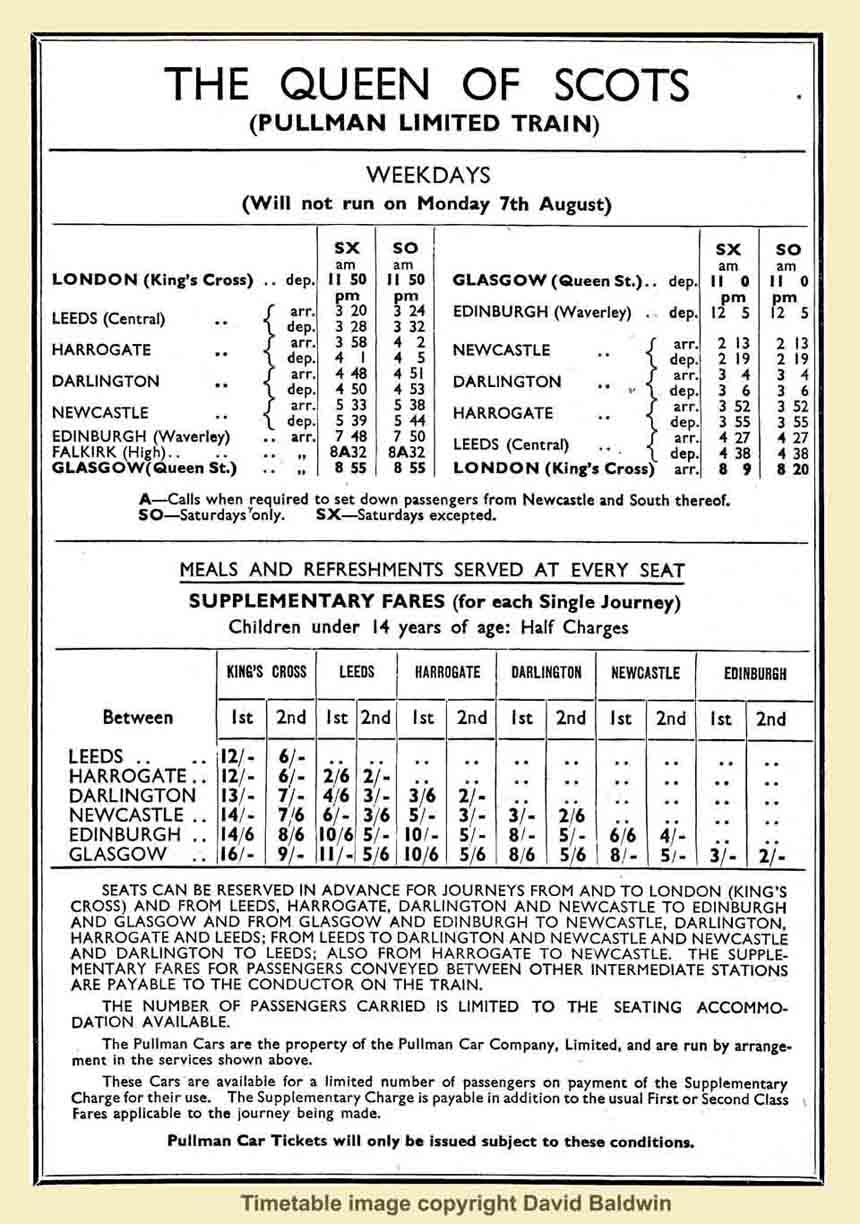
(Below Left-Right) No web page on railways in Leeds would be complete without mention of the oldest railway in the world - the Middleton Railway which was authorised in 1758 by the first Railway Parliamentary Act. The line connecting Hunslet Moor with Middleton Wood became the first standard gauge preserved line in Britain. To find out more click on link to photo of 'Y4' 0-4-0T to visit the site. (Below Right) Whilst compiling this website I've been happy to let change happen at its own pace and bumbled along in a haphazard fashion, but as more and more old photos come to light it's time to get a grip in order to maximise web space. Click on image to visit 'Holbeck Shed 55A' page.
 |  |
(Above) This section of the Ordnance Survey Map (Sheet 96) of Leeds and Bradford, circa 1950 provides a historical backcloth to the layout of BR lines radiating from the centre of Leeds...no motorways in those days; no Emporium-style shopping centres and urban sprawl that has eroded the green belt land on the outskirts of the city. Click on map to view larger image.
LEEDS CENTRAL STATION
One of the legacies left by the early railway builders was their failure to bring all lines to a common terminus in major cities. During the Sixties BR made radical changes to the rail network with the complete closure of ![]() main line passenger stations, including the former MR terminus at Manchester Central, the ex-GEC station at Sheffield Victoria, the former GWR station at Birmingham Snow Hill and the Leeds terminus of the former GNR main line at Central Station. The scheme to combine rail facilities into one reconstructed and modernised City station was a particularly slow affair taking eight years from BR's first announcement in June 1959. Working with financial expediency in mind, trackwork was replanned to accommodate the newly-installed link from Whitehall Junction enabling Doncaster and Kings Cross traffic access to the new station. The old GNR Central station closed its doors on April 29th 1967.
main line passenger stations, including the former MR terminus at Manchester Central, the ex-GEC station at Sheffield Victoria, the former GWR station at Birmingham Snow Hill and the Leeds terminus of the former GNR main line at Central Station. The scheme to combine rail facilities into one reconstructed and modernised City station was a particularly slow affair taking eight years from BR's first announcement in June 1959. Working with financial expediency in mind, trackwork was replanned to accommodate the newly-installed link from Whitehall Junction enabling Doncaster and Kings Cross traffic access to the new station. The old GNR Central station closed its doors on April 29th 1967.

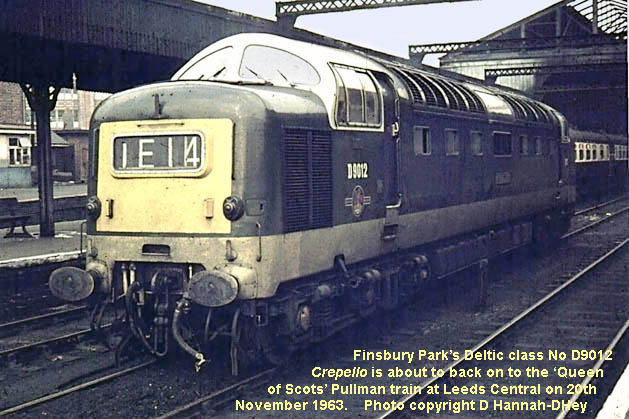
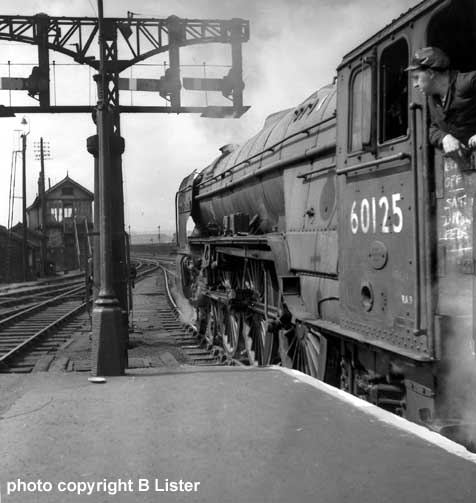
(Above-Below) These cracking photos by Brian Lister bring back fond memories of spotting days at Leeds Central. There is no mistaking the station's GN Railway origin in the shape of the aged yard lamp, water column, and the upper quadrant semaphores suspended beneath a lattice gantry. The 'A' signalbox in the background controlled the station's cramped seven platforms and two bays. Here, Class A1 Pacific No 60125 Scottish Union awaits departure with a Kings Cross train in September 1963. The saucer of milk on the platform for the station cat adds a nice touch... (Below) No 60130 Kestrel heads a Kings Cross train on the same day. Both photos © Brian Lister.
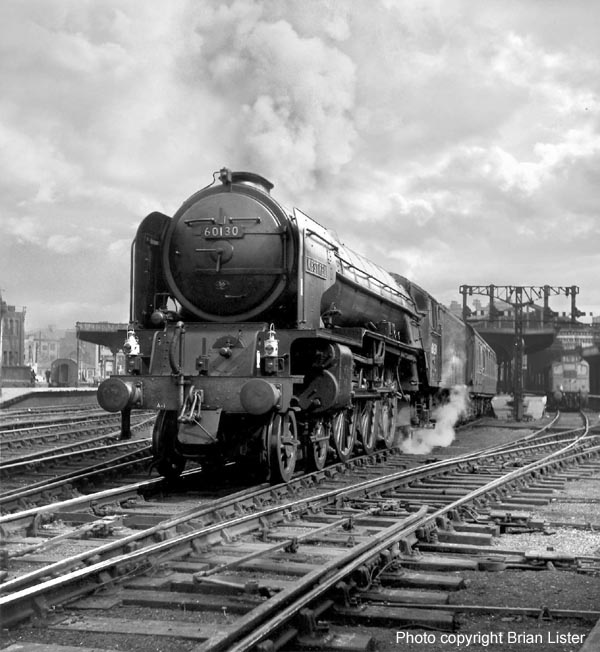
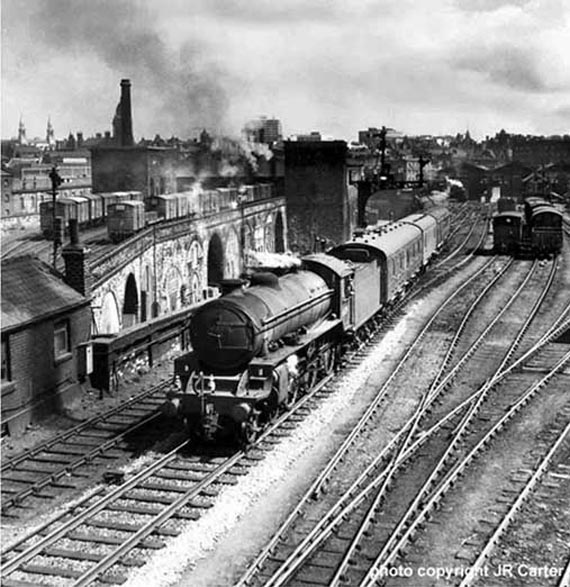
(Above-Below) After the station was demolished, a Royal Mail building was built on the site and the only evidence of the Great Northern Railway is the bridge spanning the canal and river, and the shell of the wagon hoist building which once served the high and low level goods yards. Class B1 No 61129 makes a spirited exit from Central Station with a parcels train. (Below) In the opposite direction, a BR Standard Class 4 2-6-4T No 80075 passes Leeds Central 'B' signalbox with a goods train for Wellington Street goods depot. In the background, a Drewry 204hp shunter No D2243 shunts the low level yard, now occupied by a large hotel and the Yorkshire Post Newspaper buildings. The gas holder in the middle distance marks the site of the present-day (traffic-choked) Armley gyratory road system. Both © JR Carter
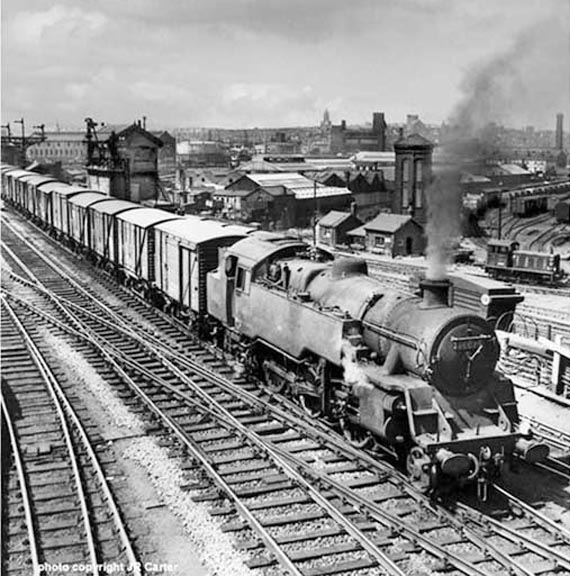

(Above-Below) The London Kings Cross-Leeds 'White Rose' express ran every weekday, leaving London in the early morning and returning in the afternoon. 
(Below) Sporting a Doncaster (36A) shedcode on the smokebox door, Class A3 No 60046 Diamond Jubilee heads the return working out of Leeds Central on the climb through Holbeck High Level. Not the gradient post on the left indicating the 1in 55 descent via the short spur to Geldard Junction, used by northbound Anglo-Scottish trains after reversal at the Leeds terminus. Photo © D Pritchard collection.

(Above-Below) Fowler 0-6-0T 'Jinty' No 47571 hauls a lengthy goods train out of Wellington Street Goods Depot past Leeds Central 'B' signal box on the climb through Holbeck High Level station. (Below) Retired railway signalman FW (Bill) Smith spent many hours at Holbeck High Level from 1945 to 1953. He took this photo of Peppercorn Class A1 4-6-2 60130 Kestrel waiting to back down to Leeds Central to work the up 'Queen Of Scots' while Class B14-6-0 61122 passes through with an up express on 18 July 1953. 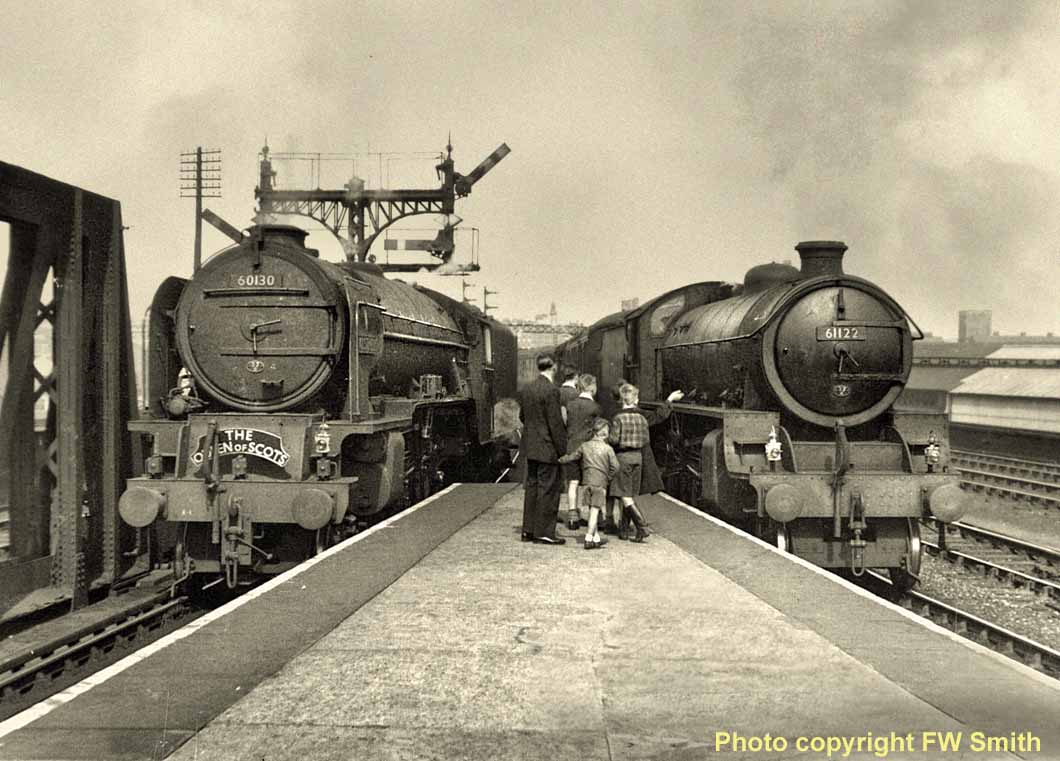
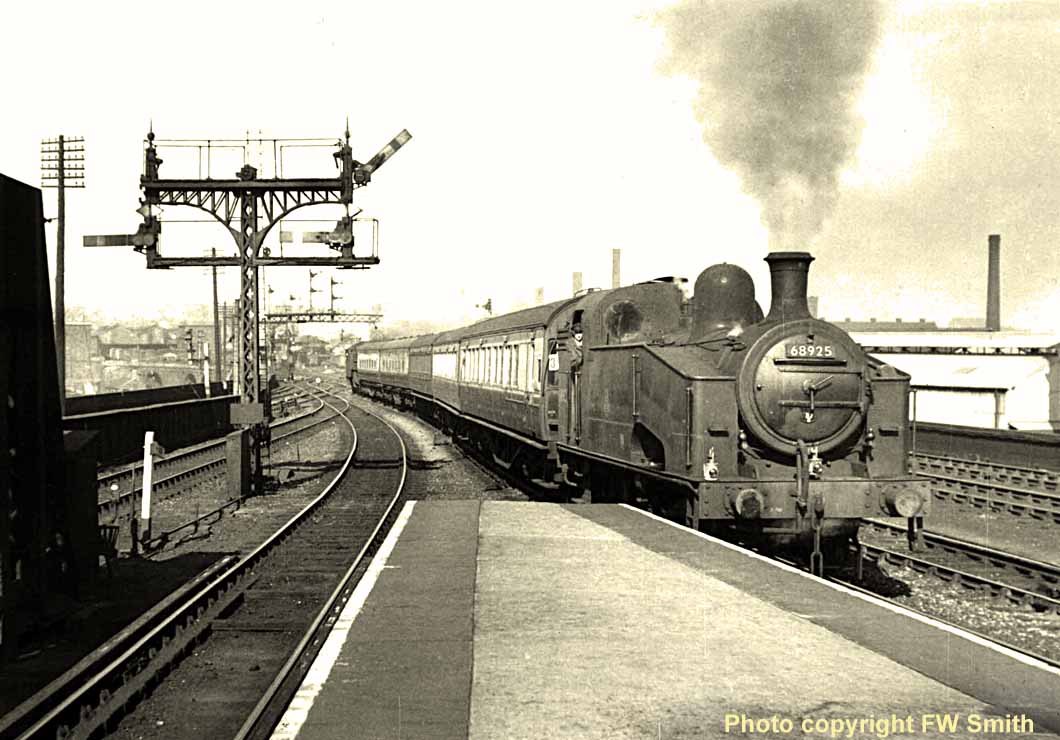
(Above-Below) On the same day, FW Smith captured Class J50 0-6-0T 68925 of Copley Hill shed passing Holbeck High level with empty stock for Copley Hill sidings. A Fairburn 2-6-4T is still attached to the rear. (Below) Another ex-LMS interloper working on former GNR metals is Stanier's 'Black Five' No 44895, seen here heading a Bradford (Exchange) portion of a train from Kings Cross through Holbeck High Level.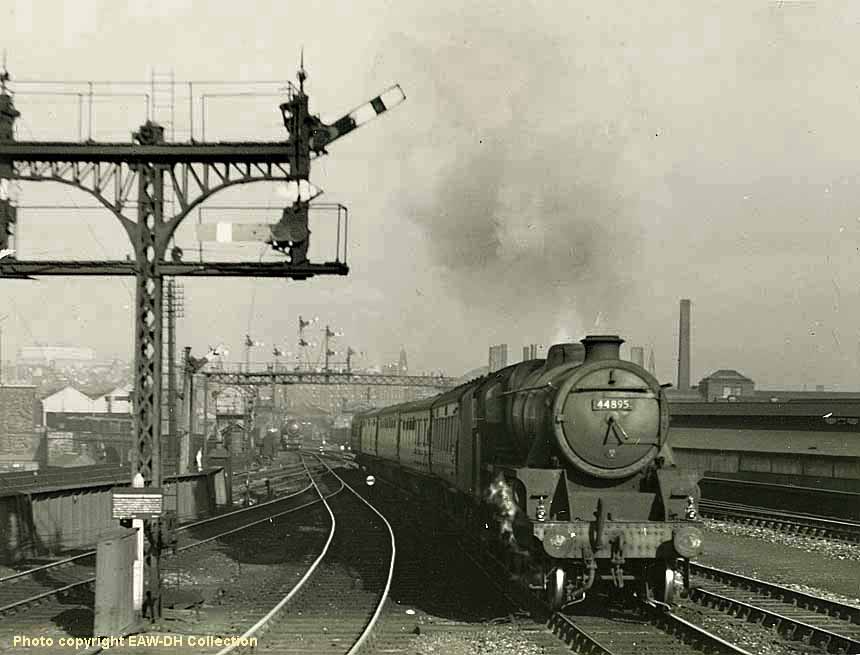

(Above) I have received an email from John Smith relating to the photo above; he writes - 'Hi David, I have only recently found you interesting site, and what little I have seen I have really enjoyed. In section 9 - BR steam days Leeds 1, there is a photo taken at the Yorkshire Post Rail Exhibition at Wellington Street Goods Depot. Can you direct me to a site where I can find photos and numbers of the locos at this exhibition? I visited it with my Uncle and thought it was in the late 50s, but the colour photo suggests it may be later. I am now a 'slow silver surfer' and have tried links to Wellington Street etc and the Yorkshire Post archives, without success. Can you help me please? Thank you, best regards John...'
If anyone can help John with the details of the exhibition please contact the email address at the bottom of the page. Thanks in anticipation.
My thanks to the Middleton Railway Trust's Company Secretary, Tony Cowling, for providing part of the answer to this question; he writes...
'The exhibition was either late 1970 or early 1971. I know this because the Middleton Railway's magazine 'The Old Run' published two articles in the March 2016 issue which related to this exhibition, and described the involvement of two of the Trust's long-standing members in its organisation. They probably also identify, at least indirectly, the main locomotives featured in the exhibition…'.
(Below) Construction of the Class A1 continued after nationalisation, and in true LNER tradition, several members of the class appeared with names of racehorses and birds, but five engines carried names of the constituent railway companies which had gone to make up the LNER - No 60113 Great Northern, a rebuild of an original Gresley Class A1 Pacific - No 60147 North Eastern; 60156 Great Central; 60161 North British and 60157 Great Eastern, the latter seen here descending the 1 in 50 past Copley Hill shed towards Leeds with a lightweight goods train - child's play for a Class 8 Pacific. The full complement of 49 engines was not named until the early 1950s, No 60157 being fitted with nameplates in November 1951.
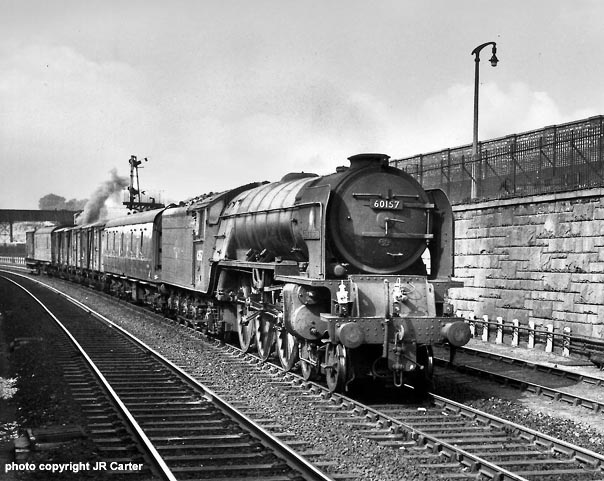

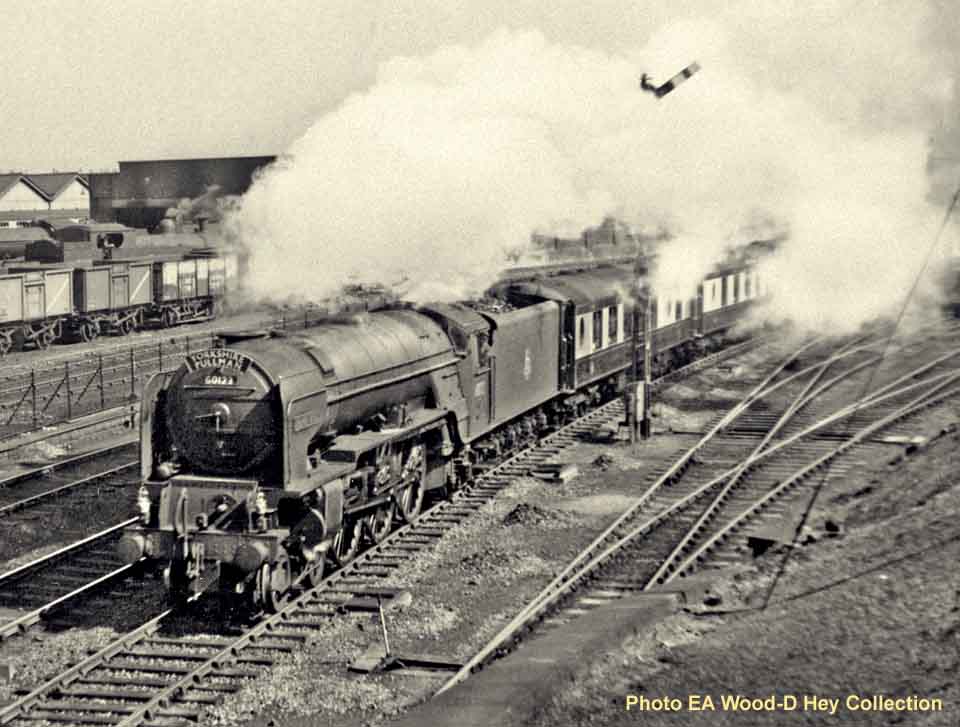

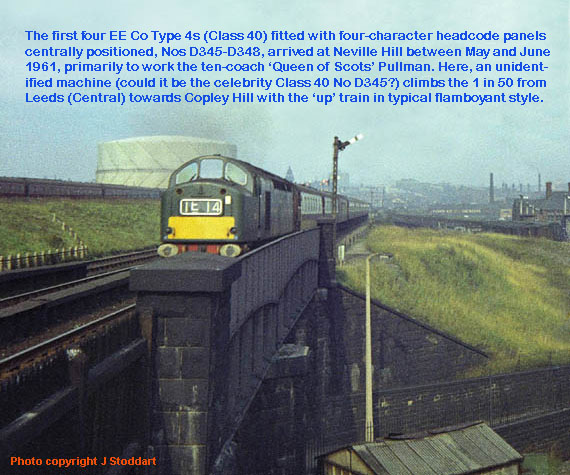
(Below) How can anyone fail not to be moved by the sight and sound of a hard-working steam locomotive? You can almost hear the roar of Class A4 No 60021 Wild Swan heading past Wortley South Junction with a train for Kings Cross in 1963. This classic shot by my good friend, Jim Carter, sends a shiver down my spine every time I look at it!

(Below) Football and steam trains - both favourite hobbies for thousands of boys in the Sixties. I'm harking back to the unsullied days of childhood before the neurotic obsession with a girl's vital statistics began to manifest itself during adolescence. In 1962, I was still a naïve youngster playing football for Horsforth Youth Club - a side regarded good enough to face Leeds United Juniors on the club's practice ground next to the Elland Road Stadium. During the pre-match warm up, I took this impromptu shot of the young Leeds side posing for the camera, which, at the exact same moment of pressing the shutter, captured a Class A3 heading a Leeds-Kings Cross train on the climb to Beeston Junction. Older readers will probably recognise some of the players - nearest the camera on the back row, is a youthful Eddie Gray and goalkeeper David Harvey, both of whom went on to represent their country, Scotland, at international level. Photo © D Hey


(Above) The Brush Type 4 (total built 512) represented the most numerous main line diesel class in operation on BR. The class appeared in a pleasing two tone green livery incorporating a yellow visual warning panel on the front ends. The radiator grilles in the roof section at cantrail level were later replaced with hydraulically operated slats controlled by a thermostat which opened and closed the aperture to allow for greater cooling. The Brush machines were widely used throughout the network, not only to replace steam but to substitute existing diesels and their initial batch allocations were quickly eradicated. Here No D1571 (later 47545) heads the 'up' 'Yorkshire Pullman' past Beeston Junction in May 1965. The titled train was withdrawn in May 1978, to be re-instated seven years later with the introduction of a new Pullman service made up of a refurbished High Speed Train (HST).
(Below) With the passing of years, our old snapshots can become valuable archive material for a variety of reasons. The two photographs show a scene that has changed dramatically over the years. With ever-increasing demands for modern housing and purpose-built industrial units, there is no stopping property developers from making inroads into 'green-belt' areas. Today, a modern out-of-town shopping centre occupies the fields on the extreme left, whilst the post-war pre-fab housing at Cottingley in the distance has been replaced by high-rise tower blocks - and typical of the motorway extravagances in the region, the Leeds Ring Road has been upgraded to serve the busy M62 at Junction 28. An inidentified Class 47 heads the 12.17 Harrogate-Kings Cross (12.33 ex-Bradford) in May 1965. (Bottom) The same spot twenty years on, but a view already consigned to history following the completion of the ECML electrification scheme connecting Leeds with the main line at Doncaster - a 3-car Metro-Cammell dmu heads towards Wakefield in 1983.

HELP! I have received a request from Paul Grayson regarding photos of the goods line between Beeston Junction and the Stourton area of Leeds.
He writes - 'Hi David, I have been looking at your photos from years gone by and followed a couple of links to an area of great interest to me. I grew up in the Hunslet-Belle Isle area of Leeds and as a boy used to spend hours playing on the disused line and bridges which came down from Beeston Junction towards Stourton. I remember that the line went between two estates at Beeston (Southleighs and Allenbys) close to the old Rex Cinema and continued down and over the existing Middleton Light Railway, then over Old Run Road and Belle Isle Road onwards to Stourton following the route of the Southbound M1. I would dearly love to find some old photos or even film of this area and would kindly ask if you could suggest any websites which could point me in that direction. I can vividly remember this line being dismantled in the 1970s. I now live on the Westwood estate at Middleton, and in the woods behind our house are the remnants of bridge parapets which I believe are part of the line I am talking about.
Kind Regards, Paul Grayston…'
If anyone can help Paul his email address is paulgrayst@hotmail.com - please note this is a non-clickable link via Outlook Express; you will have to email manually.
(Below) There are those with fallible memories who believe that station closures are exclusive to Beeching. Not so! Between 1948 and 1955 (from nationalisation to the Modernisation Plan) the British Transport Commission approved the closure of 100 passenger services and 324 stations. The outer tracks at Beeston Junction once formed the start of a fly-over junction with the Batley Branch which closed to passenger traffic on 29 October 1951. The 'down' track crossed the main line by a flyover, which can be seen in the background of the August 1961 shot of Class A1 60117 Bois Roussel heading a Leeds-bound goods. Tingley Gas Works can be seen on the horizon. In the opposite direction, Class V2 No 60889 climbs through Beeston Junction with the afternoon 'White Rose' for Kings Cross. Photos D Hey.
CLICK HERE FOR LINK TO 'BR STEAM DAYS 2'
Polite notice: All text and photographs are protected by copyright and reproduction is prohibited without the prior consent of the © owners.
If you wish to discuss the contents of this page the email address is below. Please note - this is not a 'clickable mail-to link via Outlook Express:
dheycollection@ntlworld.com



